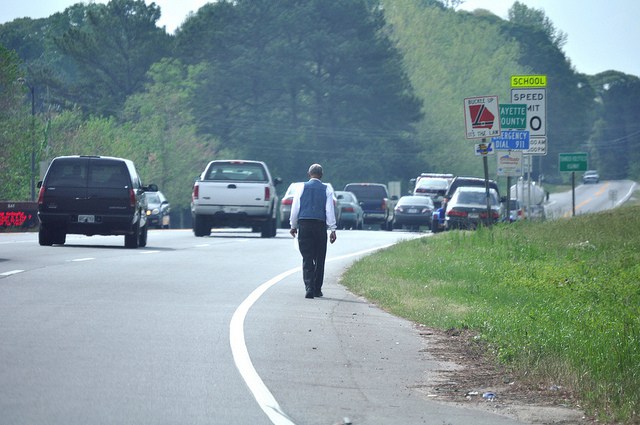The Trump Administration may be poised to quash new regulations that would have — for the first time — held automakers accountable for their performance in crashes with pedestrians.
An Obama-era reform called for a 1- to 5-star pedestrian safety rating for all new cars — a move that would have been quite timely, given that pedestrian deaths are hovering near three-decade highs and SUVs, studies show, are one of the main culprits.
But the Trump Administration's National Highway Transportation Safety Administration has been dragging its feet — and trimmed the 71-page Obama Administration proposal down to just four pages. There's hardly any information about how safety will be judged, or how the crash tests will work.
"They have effectively backpedaled," said Shaun Kildare, research director at the consumer watchdog group Advocates for Highway and Auto Safety. "They’re not necessarily moving ahead with anything."
Is NHTSA caving under pressure from auto companies? Many auto companies were initially supportive of the Obama's Administration's proposal. But not all.
General Motors objectedto the establishment of a separate category for pedestrian safety. Big Auto is, of course, heavily invested in SUVs.
"Generally speaking automakers do not like regulations," said Advocates' Director Cathy Chase. "They do not like to be told what to do."
Some auto makers were supportive however. Toyota saidit was pleased NHTSA was pursuing "global harmonization" of its safety tests. In other words, the company supported bringing the U.S. pedestrian safety standards in line with Europe's.
European automakers are required to consider pedestrian safety features. Those companies have adapted by altering hood design so that it gives way when a pedestrian is hit. They have also redesigned bumpers to reduce injuries to the lower limbs, says Kildare.
Right now, American SUVs with their high, bunt from ends are "are basically like being hit with a brick wall," said Kildare.
NHTSA's own data shows that pedestrians struck by SUVs are 2.5 timesmore likely to be killed than those struck by cars. And for children, the fatality rate is worse. More than 12,000 pedestrians have been killed since NHTSA issued its intent to update the New Car Assessment Program in 2015.
A five-star rating on pedestrian survivability in crashes "would definitely cause the industry to take pause and figure out what are the impacts of putting these vehicles on the roads when people are starting to walk more and bike more and use scooters more," Kildare said.
But now it is far from assured.
NHTSA also appears to be stopping short of requiring other basic safety features that research has shown has promise in protecting pedestrians. The combination of automatic emergency braking and forward collision warning systems, the Insurance Institute for Highway Safety estimates, could reduce "front-to-rear" car crashes by 50 percent [PDF].But car companies prefer to offer them only in luxury cars rather than as standard features, and so far, NHTSA hasn't forced their hands.
NHTSA is accepting public commentsabout the New Car Assessment Program, which it says will be used to make a final decision, through Nov. 14.






